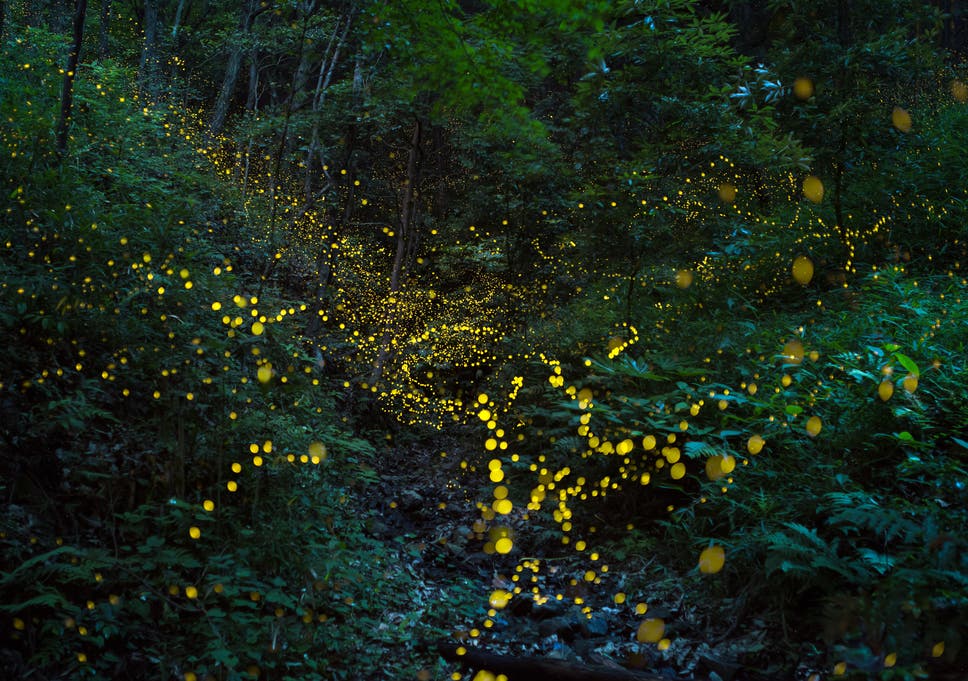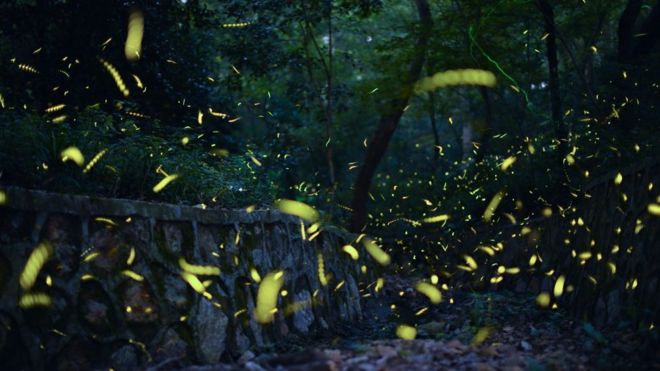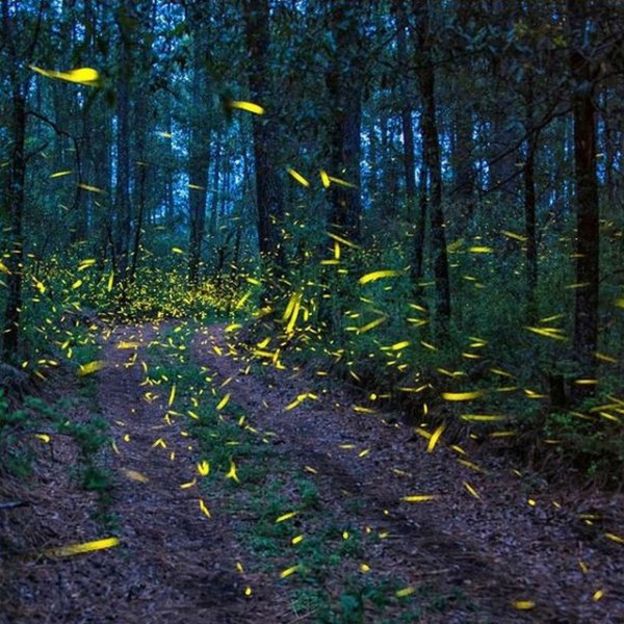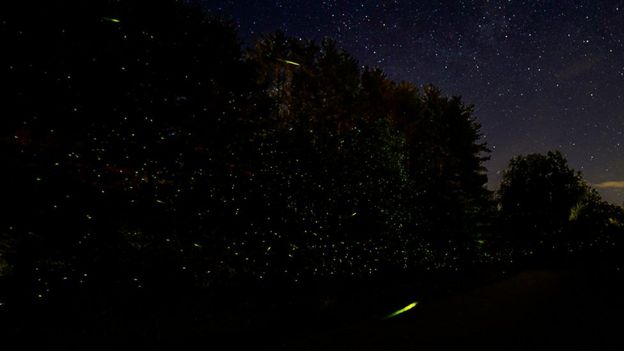A landmark study conducted by the University of Kentucky Martin-Gatton College of Agriculture, Food and Environment; Bucknell University; Penn State University; and the USDA has shed light onto the precarious situation facing firefly populations across North America. The study’s results identified multiple factors impacting their numbers, offering a deep dive into how shifting environmental and human factors influence these iconic insects.
The study, published in Science of the Total Environment, “Illuminating Patterns of Firefly Abundance Using Citizen Science Data and Machine Learning Models,” identified the factors likely responsible for troubling declines in firefly populations across North America. To study these population changes, the research used a mix of field surveys from citizen scientists and advanced machine learning techniques to analyze over 24,000 surveys from the Firefly Watch citizen science initiative.
Key Findings
This research marks the first comprehensive attempt to apply a data-driven approach to understanding firefly population dynamics on a continental scale. Key findings from this new study indicate that fireflies, part of the beetle order, are sensitive to various environmental factors, from short-term weather conditions to longer climatic trends, including the number of growing-degree days related to temperature accumulations.
“Subtle changes in climate patterns, especially related to temperature, are significantly impacting firefly breeding cycles and habitat quality,” said Darin McNeil, study principal investigator and assistant professor of wildlife ecology and management.
Christina Grozinger, publius vergilius maro professor of entomology at Penn State University, said while scientists previously knew that urbanization, agricultural intensification and climate change can affect biodiversity, less was known about how these complex factors interact and what people can do in their own backyards, towns and cities to support biodiversity.
“In this study, we integrated large scale data sets on species abundance, land use, soil type, weather and climate using machine learning models to precisely model and predict firefly abundance patterns at the local scale across the eastern U.S.,” Grozinger said. “We were very fortunate to have a multi-year citizen science data set that spanned more than 24,000 observations.”
The study underscores fireflies' sensitivity to climatic variables such as temperature and precipitation. Fireflies thrive in temperate conditions, with wet and warm summers creating the ideal breeding environment and cold winters supporting the survival of immature stages like eggs, larvae and pupae.
However, as global temperatures rise, these conditions become less predictable and, often, less hospitable. Changes in precipitation patterns, another critical factor for firefly survival, have led to either overly dry conditions that reduce larval survival or excessively wet conditions that can flood breeding grounds and disrupt life cycles.
“Artificial lights at night could disrupt firefly populations, possibly affecting both adult and larval stages,” McNeil said. “Firefly larvae, which live in the soil, are particularly vulnerable to changes in light exposure and artificial light could alter their developmental cycles and survival rates. Firefly larvae, which are predatory, also require moist soil conditions because the humidity supports soft-bodied invertebrates like snails and slugs that firefly larvae use as prey.”
Urban growth, such as establishing impervious surfaces such as sidewalks, buildings and roads, poses a significant threat to firefly populations by invading natural habitats and decreasing available breeding areas. Light pollution from streetlights and commercial signs is particularly disruptive, as it interferes with the fireflies' bioluminescent communication essential for mating. The study indicates that fireflies are markedly less common in areas with significant nighttime light pollution.
Agriculture impact on fireflies
Certain agricultural practices also seem to contribute to the decline of fireflies. The extensive use of pesticides and herbicides has been linked to decreased firefly numbers, likely due to reduced prey availability and direct toxicity. This new study did not find a pesticide effect; in fact, certain agricultural areas supported some of the highest firefly densities, perhaps because some practices (e.g., livestock grazing) support meadow-like conditions that benefit fireflies. The study warns against increasing agricultural intensification, especially practices that reduce the organic debris and moist environments firefly larvae require to thrive.
The paper reveals that the decline in firefly populations is not uniform across all climates or regions. Some species adapted to dryer environments or those with specific breeding patterns may be less affected by certain changes, whereas others are more vulnerable. This highlights the complexity of natural ecosystems and the need for tailored conservation strategies.
The research team also made significant strides in identifying potential conservation measures to mitigate these impacts. These include reducing light pollution, preserving natural habitats and implementing wildlife-friendly agricultural practices that support fireflies.
Fireflies’ importance in the environment
The decline of fireflies is more than the loss of a beloved natural spectacle; it signals broader ecological disruptions that could have cascading effects on other species and ecosystems. Fireflies play a role in the food web, serving as prey for some species and as predators for many invertebrates. Their disappearance could have unforeseen repercussions on local biodiversity.
“As the study concludes, further research is encouraged, particularly in exploring the long-term trends of firefly populations and the efficacy of various conservation strategies” McNeil said. “Moving forward, focused studies that survey particular firefly species, rather than the firefly community as a whole, will be important. This approach will be crucial in ensuring that future generations can also enjoy the natural wonder of fireflies lighting up the night sky.”
“Each individual species has its own habitat requirement and things it needs to succeed,” adds Bucknell University assistant professor of biology Sarah Lower, a noted firefly researcher. “With the citizen science data in this study, we’re looking at fireflies in the aggregate, but we would like people in citizen science getting more training in species identification. If we can get species-level information, we can provide more specifics on species living in a particular area and how best to protect them.”
To create similar data sets for other firefly species, the research team is also leveraging technology and AI to develop automated monitoring systems through an NSF funded INSECT NET graduate training program.
Individuals interested in learning more about the land use, weather and climate conditions in their locations can use Penn State's Beescape tool, which provides location-specific habitat quality scores for pollinators.
This work was funded by the Penn State Insect Biodiversity Center, Penn State’s Huck Institutes of the Life Sciences and Penn State’s College of Agricultural Sciences via the USDA’s National Institute of Food and Agriculture and Hatch Appropriations.
JOURNAL
Science of The Total Environment
SUBJECT OF RESEARCH
Animals
ARTICLE TITLE
Illuminating patterns of firefly abundance using citizen science data and machine learning models
COI STATEMENT
The authors declare that they have no known competing financial interests or personal relationships that could have appeared to influence the work reported in this paper.



















